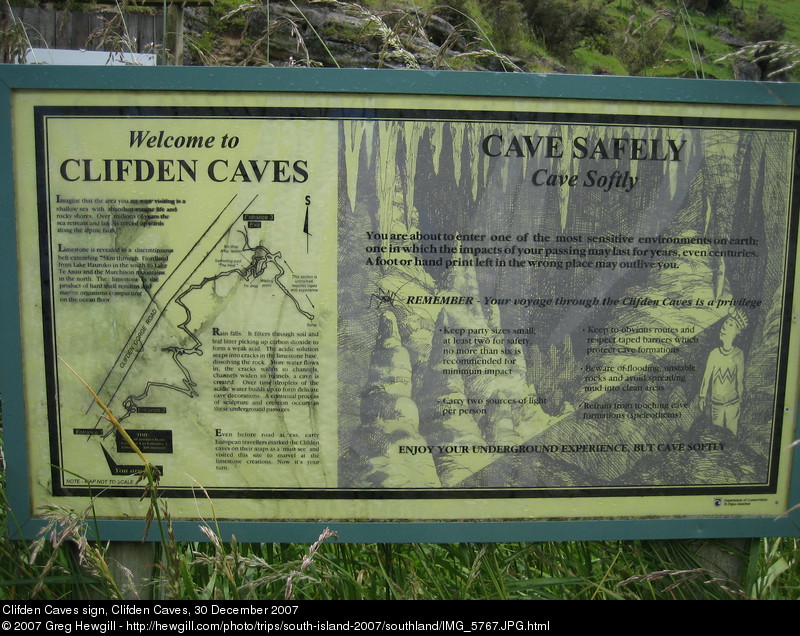
| Prev | Next |

|
|
| Prev | Next |
Clifden Caves sign, Clifden Caves, 30 December 2007
Imagine that the area you are now visiting is a shallow sea with abundant marine life and rocky shores. Over millions of years the sea retreats and land is forced upwards along the alpine fault.
Limestone is revealed in a discontinuous belt extending 75km through Fiordland from Lake Hauroko in the south to Lake Te Anau and the Murchison mountains in the north. The limestone is the product of hard shell remains and marine organisms compacting on the ocean floor.
Rain falls. It filters through soil and leaf litter picking up carbon dioxide to form a weak acid. The acidic solution seeps into cracks in the limestone base, dissolving the rock. More water flows in; the cracks widen to channels, channels widen to tunnels, a cave is created. Over time droplets of the acidic water builds up to form delicate cave decorations. A continual process of sculpture and creation occurs in these underground passages.
Even before road access, early European travellers marked the Clifden caves on their maps as a 'must see' and visited this site to marvel at the limestone creations. Now it's your turn.
Original size: 2592x1944
Timestamp: 2007:12:30 14:03:09
Exposure time: 1/250 s